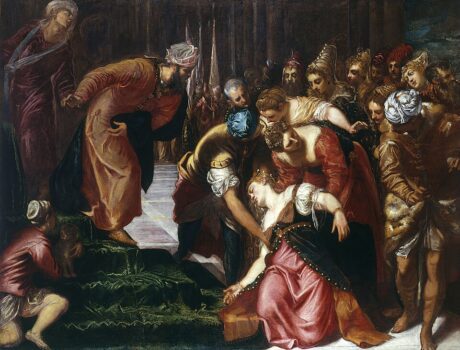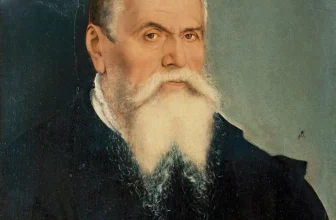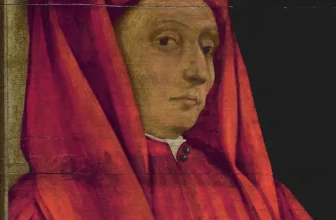Tintoretto’s Esther Before Ahasuerus Painting
The Renaissance era produced a wealth of masterpieces, each embodying complex narratives, rich symbolism, and masterful technique. Among these works stands Esther Before Ahasuerus by Jacopo Tintoretto, an Italian painter celebrated for his dynamic compositions and dramatic flair. This powerful painting captures a pivotal biblical moment, the courageous Queen Esther confronting King Ahasuerus (Xerxes I of Persia) to save her people from annihilation.
With its intense emotional charge and bold stylistic elements, Tintoretto’s Esther Before Ahasuerus stands as a profound example of Venetian Renaissance art, where faith, politics, gender, and aesthetics intertwine. This article offers a 2000-word comprehensive exploration into the painting’s creation, story, interpretation, symbolism, style, and present location.
Who Painted Esther Before Ahasuerus?
Esther Before Ahasuerus was painted by Jacopo Robusti, better known as Tintoretto (1518–1594), a prolific Venetian painter and one of the most prominent figures of the Italian Renaissance. Tintoretto was deeply influenced by the dramatic compositions of Michelangelo and the vibrant color palettes of Titian, his predecessor and rival.
Known for his rapid brushwork and inventive approach to perspective and light, Tintoretto earned the nickname “Il Furioso” for the passionate intensity he brought to his paintings. His work often combined religious or mythological themes with expressive realism, aiming to stir deep emotional responses from viewers.
The painting Esther Before Ahasuerus was completed around 1546–47 during the early part of Tintoretto’s career. It showcases his developing mastery of movement, light, and narrative drama.
What Is Esther Before Ahasuerus Painting About?
The painting is based on the biblical story from the Book of Esther in the Hebrew Bible (Old Testament). The plot centers on Esther, a Jewish woman who becomes queen of Persia. When the king’s advisor Haman devises a plan to annihilate the Jewish population, Esther risks her life by approaching King Ahasuerus uninvited, a dangerous act punishable by death.
In the dramatic moment depicted by Tintoretto, Esther faints before the king as she pleads for the lives of her people. The king extends his scepter in acceptance, ultimately sparing the Jews and condemning Haman. This pivotal episode not only underscores themes of bravery, sacrifice, and divine providence, but also offers a timeless meditation on moral courage and justice.
What Is Happening in the Esther Before Ahasuerus Painting?
In Esther Before Ahasuerus, the viewer witnesses the dramatic climax of Esther’s intercession. Tintoretto captures the very moment when Esther collapses from fear or divine awe, just as King Ahasuerus, startled, rises from his throne. The scene is composed with intense theatricality, an artistic strategy that serves both to heighten the emotional impact and to draw attention to Esther’s moral heroism.
The king’s gesture is ambiguous. He may be reaching out to support Esther or reacting with surprise to her sudden faint. His lavish garments and elevated position on the throne emphasize his authority. Esther, by contrast, is positioned lower, dressed in flowing, delicate robes that accentuate her vulnerability and grace.
Behind her, several courtiers and ladies-in-waiting gesture anxiously, their expressions conveying concern and suspense. Their figures serve to highlight Esther’s isolation and the weight of the moment. The tension between mortal fear and divine mission is vividly brought to life in this emotionally charged tableau.
Symbolism and Interpretation
Tintoretto’s Esther Before Ahasuerus is rich in symbolism, blending religious iconography with Renaissance humanist ideals.
1. Esther as a Symbol of Divine Providence and Courage
Esther represents the virtuous individual chosen to fulfill a divine purpose. Her fainting gesture can be interpreted as a symbol of human weakness overwhelmed by the divine task, or as a theatrical device showing the moment before divine intervention. Her courage, piety, and self-sacrifice evoke parallels with the Virgin Mary, a connection not lost on Renaissance viewers familiar with religious typologies.
2. Ahasuerus as Authority and Judgment
The king’s position embodies temporal power and the tension between justice and tyranny. His ambiguous response, shock, concern, or authority, serves as a metaphor for divine judgment. Will he act with mercy or wrath? The answer hangs in the balance, reflected in his physical posture and the reactions of those around him.
3. The Extended Scepter
In many depictions of this scene, the king extends his scepter, a traditional sign of acceptance and pardon. Although subtle in Tintoretto’s version, the presence or anticipation of this gesture conveys the transformative moment when mercy triumphs over decree.
4. Theatrical Lighting and Composition
Tintoretto uses light strategically to draw attention to Esther’s figure. The dramatic chiaroscuro, stark contrasts between light and shadow, highlights her face and hands, emphasizing her humanity and divine mission. This play of light is symbolic of revelation and moral clarity emerging from a context of danger and darkness.
5. Colors and Drapery
The rich reds and golds of the king’s robe symbolize power and royal authority, while Esther’s white or pale garments often denote purity, virtue, and divine favor. The swirling drapery and complex composition reflect the chaos of the moment, underscoring the fragile balance between life and death.
What Type of Art Is Esther Before Ahasuerus?
Tintoretto’s Esther Before Ahasuerus is a prime example of Renaissance religious painting, specifically within the Venetian Mannerist tradition. It is categorized as a history painting, which was regarded as the highest form of art in the Renaissance hierarchy due to its narrative and moral weight.
Key Characteristics:
Mannerist Influence: The exaggerated poses, elongated proportions, and complex spatial arrangements reflect Mannerist tendencies, a style that followed the High Renaissance and emphasized artifice and elegance.
Venetian Colorito: In contrast to the Florentine emphasis on design (disegno), Venetian painters like Tintoretto focused on color (colorito). His bold, expressive use of pigment creates mood and emotion.
Dynamic Composition: The scene is carefully choreographed to guide the viewer’s eye across the canvas, from Esther’s limp body to the king’s reaction, then to the background figures.
Dramatic Realism: Despite the stylization, Tintoretto brings a realism to the figures’ expressions and gestures, grounding the spiritual narrative in human emotion.
Location of the Esther Before Ahasuerus Painting Today
Today, Esther Before Ahasuerus by Tintoretto is housed in the Royal Collection Trust, London. It is currently displayed at Hampton Court Palace, one of the historic royal palaces in England.
The painting is part of the British monarchy’s vast art holdings and has been preserved as a significant example of Renaissance religious painting. Its placement in the Royal Collection underscores its historical and aesthetic value, as well as the enduring fascination with biblical subjects in Western art.
Historical and Cultural Context
Tintoretto’s painting emerged during a time of religious upheaval and reform. The Protestant Reformation and the Catholic Counter-Reformation significantly influenced how religious stories were depicted. Artists were increasingly tasked with creating works that not only educated but emotionally moved their audiences.
Esther’s story, with its themes of divine justice, female agency, and ethnic survival, resonated strongly in a time when Europe was grappling with questions of identity, authority, and faith. In Venice, a republic balancing secular power with deep religious traditions, such subjects carried both spiritual and political undertones.
Furthermore, the 16th century saw growing interest in female biblical figures. Esther’s story was often cited as an example of virtuous womanhood, aligning with contemporary discourses on morality, loyalty, and the role of women in society.
Comparisons and Artistic Legacy
Tintoretto’s Esther Before Ahasuerus can be compared with other treatments of the same theme, such as those by Artemisia Gentileschi or Peter Paul Rubens. Where Rubens emphasized voluptuous beauty and courtly opulence, and Gentileschi portrayed emotional intensity and feminine strength, Tintoretto blended divine awe with Renaissance theatricality.
The painting also prefigures Baroque aesthetics, its dramatic contrasts, movement, and heightened emotional states influenced later artists like Caravaggio and Rembrandt. Tintoretto’s legacy is evident in their shared concern with light, gesture, and narrative.
The Enduring Power of Esther Before Ahasuerus
Tintoretto’s Esther Before Ahasuerus remains a powerful visual interpretation of a foundational biblical story. Its enduring significance lies not only in its aesthetic mastery but also in its moral and emotional depth. By portraying the moment of Esther’s courageous plea with such tension and nuance, Tintoretto invites viewers to reflect on themes of justice, fear, faith, and the capacity of individuals, particularly women, to change the course of history.
In a single frame, the painting captures the eternal struggle between vulnerability and authority, silence and speech, annihilation and salvation. It stands as a testament to Tintoretto’s genius and to the enduring resonance of sacred narratives in the human experience.
Whether viewed in a sacred or secular light, Esther Before Ahasuerus continues to inspire, challenge, and move audiences centuries after its creation, a true masterpiece of Renaissance art.




